
How To Prepare and Pack Your Yom Tov Food for Travel
[ad_1]
We broke down the process for maximum efficiency and minimum hassle.
If you’ve ever traveled for Yom Tov and prepared your own food, you know that it’s a big job. Huge, actually. And if you’re hosting at your destination, it can feel impossible.
Last year, we changed our Yom Tov plans very late in the game and decided to go to Israel for the first half of Sukkos. And we’d be arriving erev Yom Tov. Meaning, there wouldn’t be much time to shop and cook. Also, with a daughter and a son with lots of seminary and yeshiva friends, we’d be hosting pretty much every meal. Did we mention that we have lots of family there who would be joining us in our very large sukkah?
The Yom Tov cooking and packing operation became serious business! Let’s start by saying you can freeze almost anything. The only things I planned to prepare fresh on erev Yom Tov were: salmon, baked potatoes, roasted vegetables and chicken soup. (Chicken soup can definitely be frozen and transported, but I would need so much, and it’s so easy to prepare, that it wasn’t worth preparing in advance.)
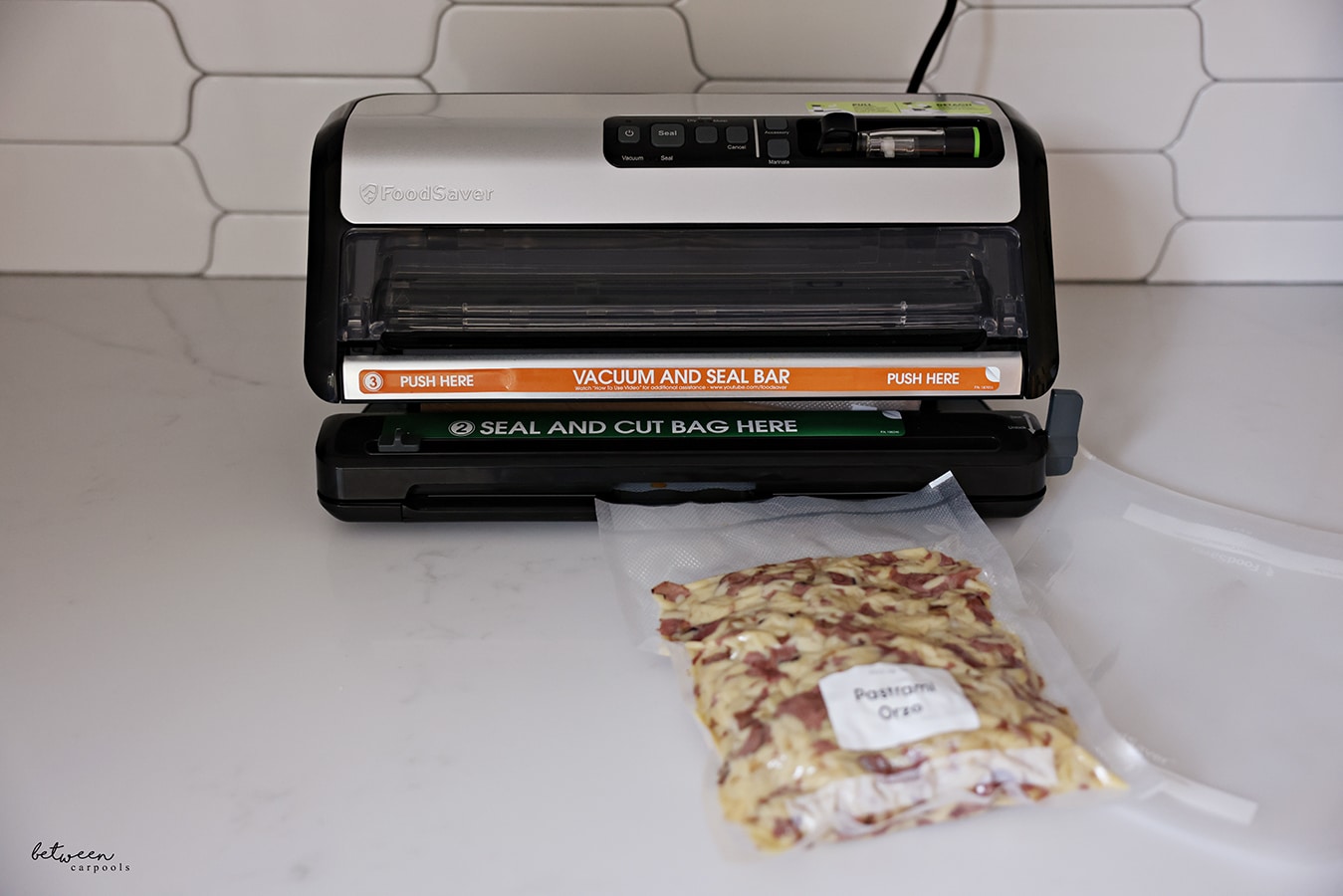 Every single thing I cooked or baked was frozen and vacuum packed. This is not a job for a small vacuum sealer. This is the time to borrow or invest in a quality machine like this FoodSaver one that I have. It works quickly and without requiring any “do overs” like some cheaper machines. And you’ll need extra bags and rolls. (Note: Costco often has refill bags and rolls at good prices.)
Every single thing I cooked or baked was frozen and vacuum packed. This is not a job for a small vacuum sealer. This is the time to borrow or invest in a quality machine like this FoodSaver one that I have. It works quickly and without requiring any “do overs” like some cheaper machines. And you’ll need extra bags and rolls. (Note: Costco often has refill bags and rolls at good prices.)
There are two reasons you want to vacuum seal everything. The first is for freshness. Food that is vacuum sealed will last longer in the freezer and in the fridge, too. And the second reason is to save space. Vacuum sealing eliminates any excess air that would be trapped in a container.
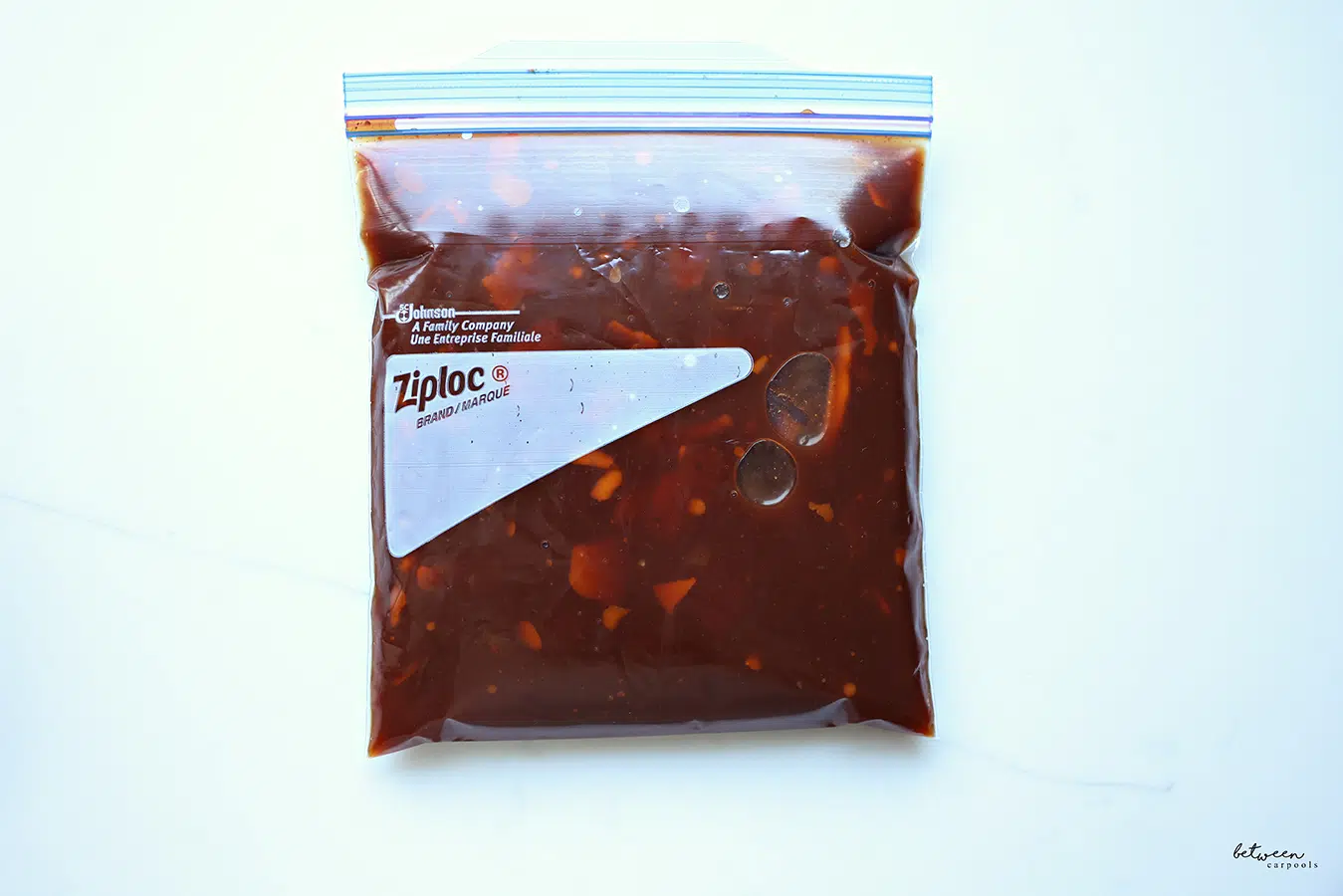
So let’s talk about how to pack everything. The goal is to get everything as flat as possible. This means no round containers.
Liquids. Anything liquid – soups, sauces, compotes – should be frozen in square/rectangular containers or flat in ziploc bags. These will then be vacuum sealed in a bag after they are frozen solid. Just pop the cube out of the container and put it into a vacuum seal bag. This means you can reuse the containers for different soups, so you don’t need too many.
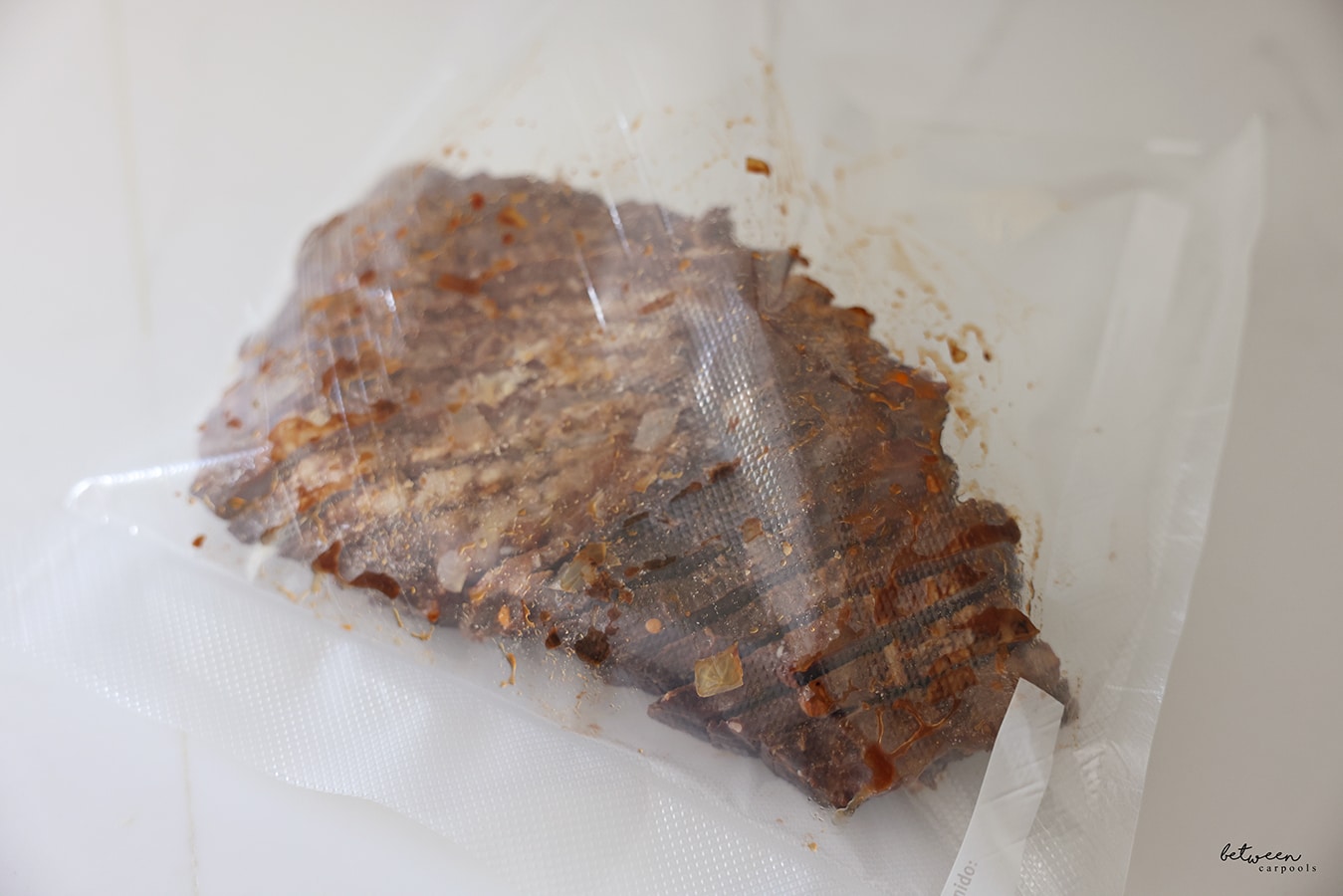
Meats. Roasts should be cooled and then sliced.
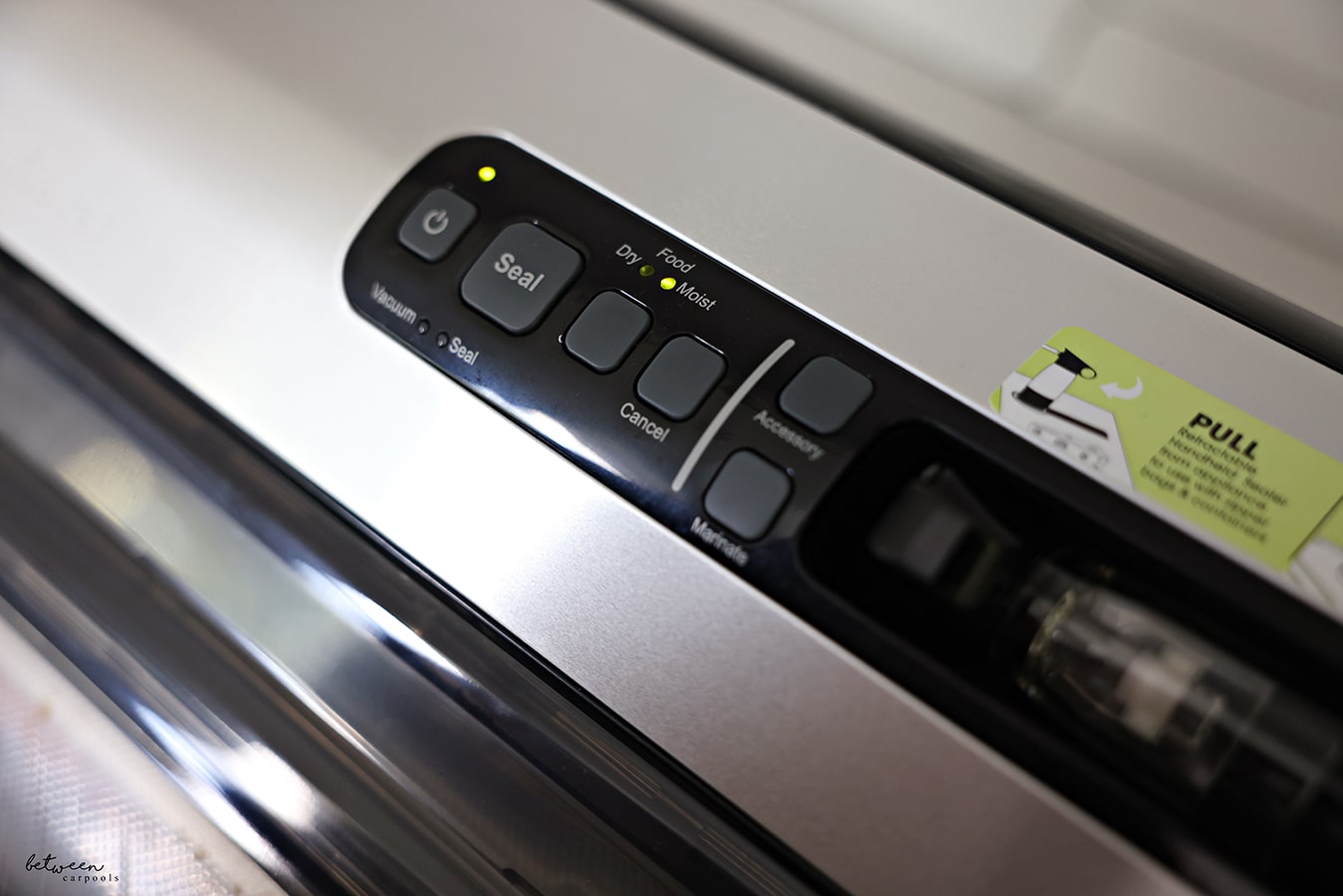 The meat can be vacuum packed before freezing – just use the moist setting. Freeze the sauce flat in a ziploc bag and then switch to vacuum bag and vacuum seal separately when frozen solid.
The meat can be vacuum packed before freezing – just use the moist setting. Freeze the sauce flat in a ziploc bag and then switch to vacuum bag and vacuum seal separately when frozen solid.
Chicken. You can vacuum seal chicken (cutlets or on-the-bone) marinated raw or fully cooked. (When there’s a lot of liquid in the bag, it can get messy. Try holding the bag with a fold above the food when inserting it into the machine to prevent the liquid from being suctioned up.)
Grains/Sides. Rice, pasta, quinoa – these can all be vacuum sealed when fully cooked, and then frozen. They will look and taste fresh once defrosted.
Desserts/Doughs. I prepared galette dough and vacuum sealed them in rounds. Then they can be defrosted, rolled out (use a soda bottle) and filled with fresh fruit. You can do the same with all sorts of crumb toppings.
bullets. Kugels or other “mushy” foods should be frozen first and then vacuum sealed.
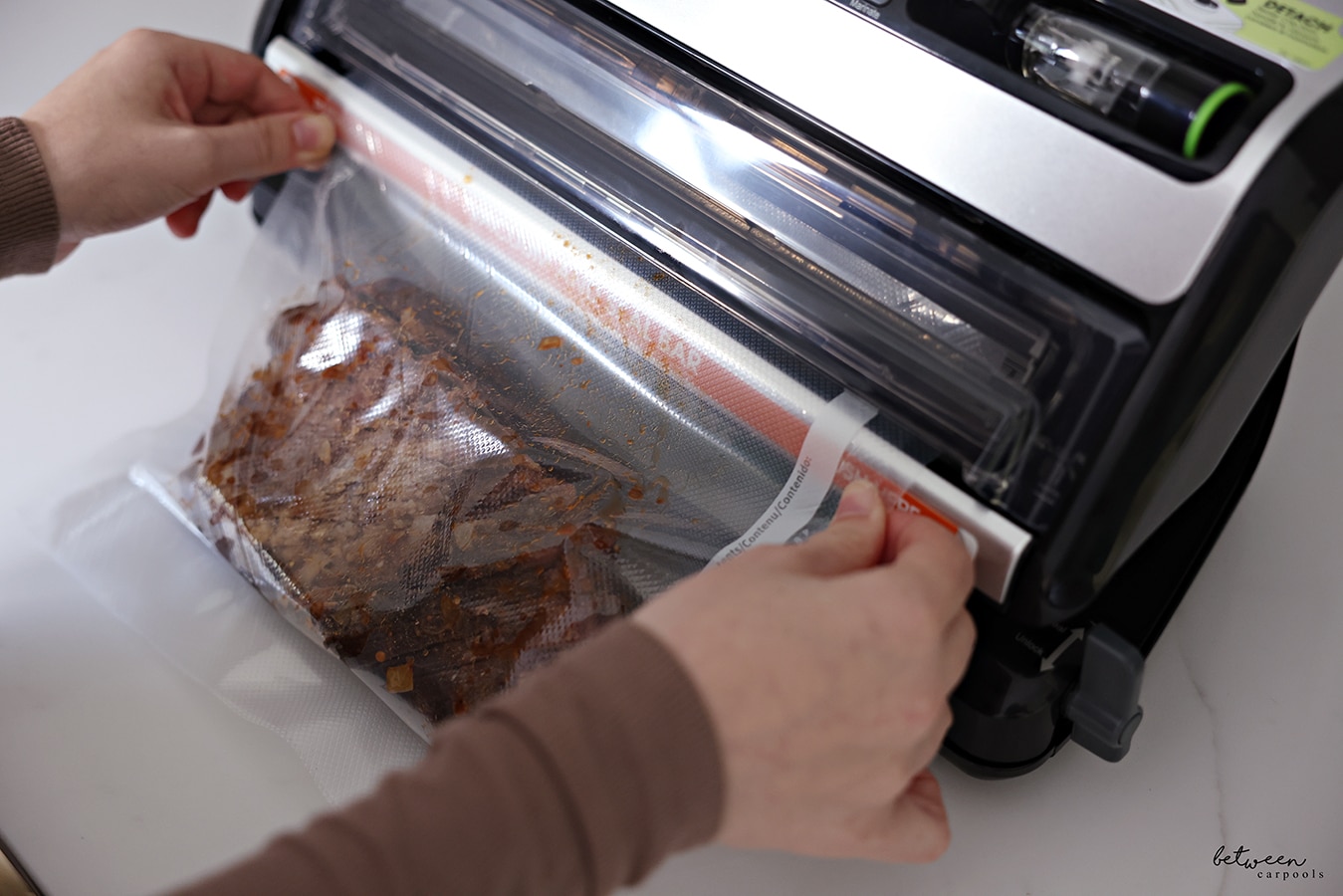 Note: All food must be fully cooled before vacuum sealing for safety.
Note: All food must be fully cooled before vacuum sealing for safety.
If you are packing for a Yom Tov that’s split into two parts, separate and mark clearly which items are for which part of Yom Tov. Consider packing in separate suitcases/coolers.
By the time you are ready to pack your suitcases or boxes, you will have mostly square and flat packages like building blocks. These can be packed together very tightly which will help them stay frozen. These ice pack blankets can be placed around and/or on top of the food. We chose to carry on all our cooked food. I figured clothing could be replaced if a suitcase went missing, but not all that hard work! You’d be surprised at how much you can fit in a wheeled carry-on suitcase!
When you arrive, there’s a good chance you won’t have as much freezer space as you had at home. The good thing is that your vacuum sealed food will last much longer in the fridge, so not everything has to be frozen. Plan what you will need for the later part of your stay and only freeze those packages. The rest will be fine unopened in the fridge.
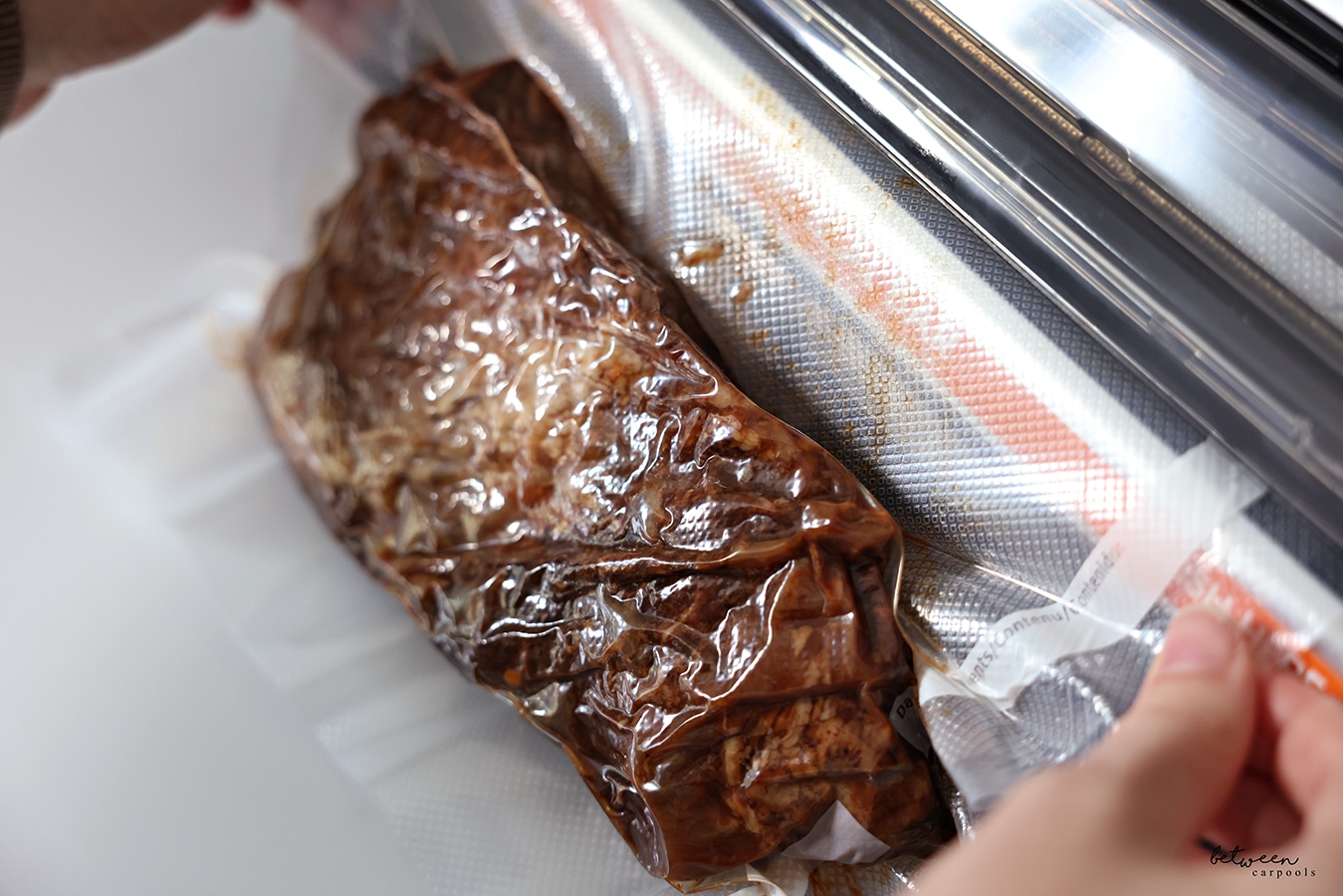 This may sound like a lot of work – and it is. But with all this advance prep, you will have a much more relaxed Yom Tov wherever it is that you’re going. Fresh salads, roasted vegetables, baked salmon – these are all simple to prepare anywhere in the world. The rest of the work will be behind you. Another piece of advice: Prepare an online supermarket order to place right when you arrive. It can take a while to navigate a supermarket website you’re not used to, so it’s worth spending the time before you even leave. (FYI In Israel, oats are called “kvakker” even when they’re not actually Quaker brand. Just sharing this because fresh oatmeal squares and other 9×13 goodies are easy to prepare even in a rental apartment.) Special Market is a highly recommended site in Yerushalayim. Local kosher stores are your best bet, but you can use Instacart or Shipt at many American destinations.
This may sound like a lot of work – and it is. But with all this advance prep, you will have a much more relaxed Yom Tov wherever it is that you’re going. Fresh salads, roasted vegetables, baked salmon – these are all simple to prepare anywhere in the world. The rest of the work will be behind you. Another piece of advice: Prepare an online supermarket order to place right when you arrive. It can take a while to navigate a supermarket website you’re not used to, so it’s worth spending the time before you even leave. (FYI In Israel, oats are called “kvakker” even when they’re not actually Quaker brand. Just sharing this because fresh oatmeal squares and other 9×13 goodies are easy to prepare even in a rental apartment.) Special Market is a highly recommended site in Yerushalayim. Local kosher stores are your best bet, but you can use Instacart or Shipt at many American destinations.
Bonus: The following are things I find useful to take along from home when traveling (some are specific for travel to Israel): A good knife, disposable cutting boards, Ziploc bags, sponges, brown sugar (it’s not the same in Israel), 9x13s if you have room (good ones are very pricy in Israel and they can be very hard to find) Non-kitchen items: dryer sheets, mesh bags for laundry if you use them regularly, Sharpie (always seems to come in handy)
Make sure to check out this post about MoovIt if you will be using public transportation.
[ad_2]
Source link


